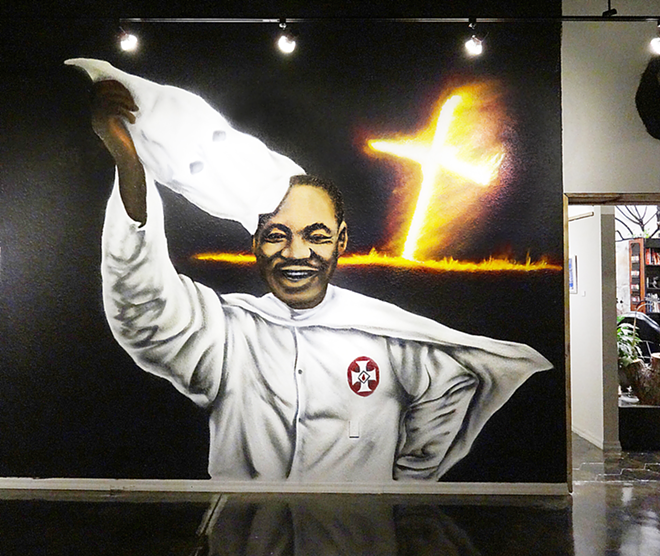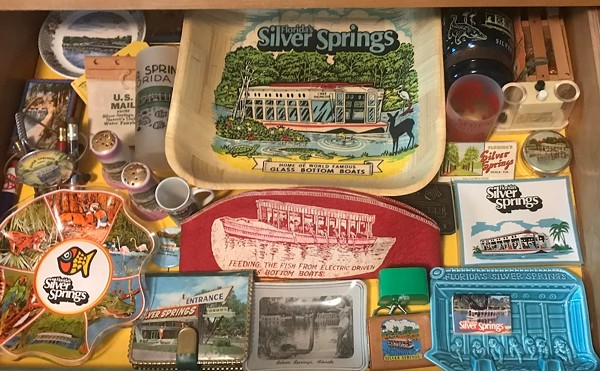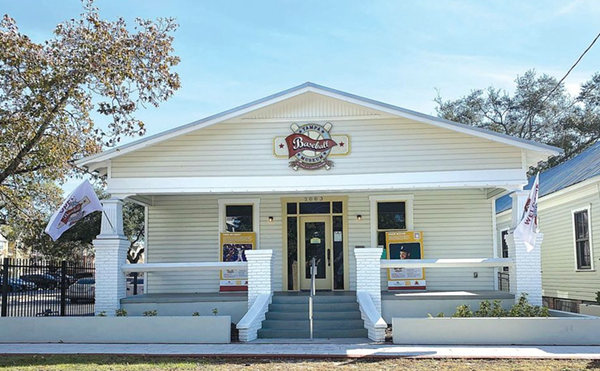
In 2010, St. Petersburg City Council member Leslie Curran and other community leaders persuaded developer Tom Gaffney to transform much of Central Avenue's 600 block from a blighted strip into a home for small businesses with an artistic bent. Gaffney put property manager Gary Burnside in charge of the renovation of his buildings and the historic Crislip Arcade, the centerpiece of his property on the block, and offered bargain rents and five-year leases to artists and retail start-ups like Misred Outfitters. In turn, the new tenants pitched in with their own efforts — branding the rehabbed strip as the “600 Block,” hosting block parties and cross-promoting each others' businesses.
Two years later, the block is one of downtown St. Pete’s success stories — an almost utopian convergence of a developer’s open mind and the determination of local artists and entrepreneurs. Other than a few unreliable tenants, little has happened to disturb harmony on the block.
Until earlier this month, that is.
On Sat., Sept. 8, Collective Gallery and Tattoo opened a solo exhibition of new work by Allen Hampton. The show has an intriguing premise: every work on display is priced at material cost, and the pieces all demonstrate Hampton’s peculiar aesthetic — a mix of the macabre and the beautiful, the heretical (read, extremely politically incorrect) and the humorous (depending on your perspective). A desiccated, tattooed baby pig sold as a sculpture for $20; a 3D screenprint of a canine eating a raptor eating a snake was still available last week for $25. Other works include vintage puzzles partially painted over with aphoristic texts by Hampton, e.g., one of a cat clinging to a disco ball that reads “Hang in there, faggot.” A wall-mounted artist’s statement proclaiming “I am not racist, sexist or homophobic” can be purchased for $1.
Like a lot of contemporary artists, Hampton, who graduated from USF with an MFA several years ago and now teaches as an adjunct instructor at UT, regards provocation as a serious aesthetic strategy. But one of the works in his exhibit — a 12-by-10-foot spray-painted mural of a Ku Klux Klansman removing his hood to reveal the face of Dr. Martin Luther King Jr. — did more than spark the conversations he had hoped for. Clearly visible through the gallery’s storefront windows, it prompted Burnside, the property manager, to request the mural’s removal two days after the opening, telling Collective that the gallery’s lease would be in jeopardy if the image were not taken down immediately.
Hampton, who describes the intervention as censorship, painted over the mural the same day after consulting with Collective co-owner Mike Wior.
“Neither of us has the time or the resources to be able to fight that,” Hampton says. “What’s the best thing for the show, for the shop and for the conversation? Paint over it. That will be a lot of conversation as well, which was the purpose of the piece initially. … So the idea of painting over it, to me, was easy.”
What remains of the mural is a white silhouette of the figure against a black background. Hampton feels that the piece was misunderstood by Burnside and other people who complained.
“I’ve been dealing a lot over the last few years with work that tries to show two opposites dealing with each other at the same time and how — when you are one of these extremes, or possibly both of these extremes — you end up in this weird limbo space where you’re just pointless,” Hampton says.
“The KKK would be just as offended by this image as anybody,” he says. Geary Taylor, aka Rasta, an artist who runs 1 on 1 Customs, the sneaker and apparel painting business at the opposite end of the 600 block, says he saw the mural and was offended by it after an angry customer complained to him and threatened to throw a brick through Collective’s window. In turn, Taylor mentioned the painting to Burnside, who visited his shop on other business the day after the exhibit opening. The two discussed not only the mural but a postcard advertising the show that depicts Hampton shirtless and wearing what looks like a KKK hood crafted out of a plastic bag, standing next to a watermelon and a wooden cross. Businesses on the block, including his, had refused to display the card, Taylor says.
“The flier is what takes it to where you go, what is going on here?” Taylor says. On the following day, as Hampton was preparing to paint over the mural, Taylor visited the gallery for a conversation initiated by Hampton via Facebook. (Their meeting is described in detail at Art Taco.) Eventually they “agreed to disagree,” says Taylor, who bought a piece from the show as a conciliatory gesture.
“As a brown-skinned person, I’ve never found any humor in the KKK,” Taylor says. “I understand what he’s saying, but I don’t agree.”
The property manager, Burnside, who said during a phone interview that he is still angry about the image, is more blunt.
“This artist is nothing. For him to disparage Martin Luther King’s legacy — give me a break,” Burnside says.
Ordinarily he would not interfere with the content of artworks on the 600 Block, but the mural’s size and visibility from Central Avenue caused him to step in for the first time.
“I never thought I would have to be in this situation,” Burnside says. “Some people don’t think. They just think they’re an artist and they can say and do anything they want to.”
Both he and Leslie Curran, the City Council member who owns ARTicles gallery farther west on Central and who was instrumental in the 600 Block’s establishment, say the mural’s controversy reminded them of a different event in St. Petersburg history involving a politically and racially charged image — the 1966 arrest of Omali Yeshitela for tearing down a mural at St. Pete’s City Hall in protest of the painting’s demeaning stereotypes of African-Americans. Yeshitela later founded the Uhuru movement and acted as a liaison between the city and the black community during the 1996 race riots that followed the police shooting of 18-year-old Tyron Lewis.
Curran defends the property manager’s right to request the removal of Hampton’s mural, given that “we’ve come a long way as a city.” “We work hard at trying to be that seamless, inclusive city. I don’t see how this [mural] helps that,” she says. “Being in the artistic business myself, I don’t think we should stymie anyone’s expression, but as a community we need to be aware of what is acceptable.”
“Some people don’t think. They just think they’re an artist and they can say and do anything they want to.”


















